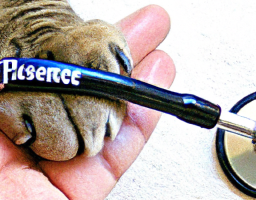If you’ve ever wondered about the ins and outs of pet insurance, look no further. In this concise guide titled “Pet Insurance 101: Understanding the Basics,” we’ll walk you through everything you need to know to make an informed decision for your furry friend. From understanding the different types of coverage to knowing what factors affect the cost, this article aims to provide a comprehensive overview to help you navigate the world of pet insurance with ease. So, sit back, relax, and let’s get started on this educational journey!
What is Pet Insurance?
Pet insurance is a type of insurance coverage that provides financial support for veterinary expenses. Just like health insurance for humans, pet insurance helps to cover the cost of medical care in case of accidents, injuries, or illnesses that may affect your furry friend. It provides peace of mind by ensuring that you won’t have to worry about unexpected veterinary bills.
Coverage for veterinary expenses
One of the main purposes of pet insurance is to provide coverage for veterinary expenses. This includes visits to the veterinarian, diagnostic tests, surgeries, medications, and any other treatments required for your pet’s health. With pet insurance, you can rest assured that you won’t have to choose between the well-being of your pet and your finances.
Protection in case of accidents or illness
Accidents can happen at any time, and pets are not immune to them. Whether it’s a broken bone from a fall or a swallow of something they shouldn’t have, accidents can lead to unexpected trips to the vet. Pet insurance helps protect against the financial burden that can arise from unexpected accidents or illnesses, ensuring that your pet receives the necessary care without causing undue stress on your wallet.
Financial support for expensive treatments
In some cases, pets may require expensive treatments such as chemotherapy, surgery, or long-term care. These treatments can be financially overwhelming, especially if they are necessary for your pet’s well-being. Pet insurance provides the financial support needed for these expensive treatments, allowing you to make decisions based on what is best for your pet’s health, rather than your financial situation.
Why Get Pet Insurance?
Peace of mind
One of the primary reasons to get pet insurance is the peace of mind it provides. As a pet owner, you want the best possible care for your furry companion, but unexpected accidents or illnesses can throw a wrench in your plans. With pet insurance, you can have peace of mind knowing that you will be able to afford the necessary care for your pet, regardless of what challenges may arise.
Cost savings
Pet insurance can also save you money in the long run. While it does require a monthly premium, the coverage provided can be a fraction of what you would pay out of pocket for veterinary care. By spreading the cost over time, pet insurance ensures that you won’t be hit with a massive bill all at once if your pet requires medical attention.
Access to better veterinary care
Having pet insurance can also give you access to a wider range of veterinary care options. With coverage in place, you may be more likely to seek out specialized care, advanced treatments, or second opinions, knowing that the financial burden will be lessened. This can result in better care for your pet and potentially better outcomes for their health.
Types of Pet Insurance
When it comes to pet insurance, there are several different types of coverage options available. Understanding these options can help you choose the right policy for your pet’s needs and your budget.
Accident-only coverage
Accident-only coverage is the most basic form of pet insurance. As the name suggests, it provides coverage only for accidents. This type of coverage typically does not cover any illnesses or pre-existing conditions. While accident-only coverage is the least expensive option, it may not provide the comprehensive coverage you want for your pet.
Time-limited coverage
Time-limited coverage provides coverage for a specified period of time, usually 12 months. This type of coverage has a maximum benefit amount that can be claimed during that time period. After the 12 months are up or the maximum benefit is reached, any conditions treated during that time will no longer be covered.
Maximum benefit coverage
Maximum benefit coverage provides coverage up to a certain maximum limit per condition or per year. Once the maximum benefit is reached, the condition will no longer be covered. This type of coverage can be suitable for pets with a shorter life expectancy or for pet owners who are looking for coverage that extends beyond a time-limited policy.
Lifetime coverage
Lifetime coverage is the most extensive and comprehensive type of pet insurance. It provides coverage for your pet’s entire lifetime, as long as you continue to renew the policy. Lifetime coverage typically has higher premiums but offers the most comprehensive protection, including coverage for chronic conditions and ongoing treatment.
Factors to Consider when Choosing a Pet Insurance Provider
Choosing the right pet insurance provider is essential to ensure that you are getting the best coverage for your pet’s needs. Here are some factors to consider when making your decision:
Cost of premiums
The cost of premiums is an important factor to consider when choosing a pet insurance provider. Take the time to compare quotes from different providers and consider how the premiums fit into your budget. However, it’s important to remember that the cheapest option may not always provide the best coverage.
Coverage limits
Review the coverage limits of the policies offered by different providers. Consider the maximum benefit amount, as well as any per-condition or annual limits. Make sure that the coverage provided aligns with your expectations and provides adequate protection for your pet’s potential medical needs.
Exclusions and limitations
Pay attention to the exclusions and limitations of the policies you are considering. Some policies may exclude coverage for pre-existing conditions, certain breeds, or genetic conditions. Make sure you understand what is and isn’t covered to avoid any surprises when it comes time to make a claim.
Claim process
Consider the ease and efficiency of the claim process offered by the pet insurance provider. Look for user-friendly digital platforms or apps that allow you to submit claims easily and track their progress. A smooth and hassle-free claim process can save you time and frustration.
Customer reviews and reputation
Take the time to read customer reviews and research the reputation of the pet insurance provider. Look for feedback on their customer service, claim settlement process, and overall satisfaction. A reputable provider with positive customer reviews is more likely to provide reliable and efficient service.
Different Levels of Coverage
When selecting a pet insurance policy, you will have options for different levels of coverage. Understanding these levels can help you make an informed decision about the best fit for your pet’s healthcare needs.
Basic coverage
Basic coverage typically provides coverage for accidents, injuries, and some illnesses. It is the most affordable level of coverage but may not cover preventive care or more expensive treatments.
Mid-range coverage
Mid-range coverage offers a balance between cost and coverage. It usually includes coverage for accidents, injuries, illnesses, and sometimes preventive care. This level of coverage may also provide higher benefit amounts or lower deductibles compared to basic coverage.
Comprehensive coverage
Comprehensive coverage is the highest level of coverage available. It typically covers accidents, injuries, illnesses, preventive care, and sometimes alternative treatments or therapies. This level of coverage provides the most comprehensive protection for your pet’s healthcare needs.
Understanding Policy Terms and Conditions
When reviewing a pet insurance policy, it’s important to understand the various terms and conditions that may affect your coverage. Here are some key terms to familiarize yourself with:
Deductibles
A deductible is the amount you will need to pay out of pocket before the insurance coverage kicks in. It is important to consider the deductible amount and how it fits into your budget when choosing a pet insurance policy.
Reimbursement levels
Reimbursement levels refer to the percentage of veterinary expenses covered by the insurance provider. Most policies offer reimbursement levels ranging from 70% to 100%. Keep in mind that a higher reimbursement level may come with a higher premium.
Pre-existing conditions
Pre-existing conditions are typically not covered by pet insurance. These are conditions that your pet had before the insurance policy was purchased or during any waiting periods. Make sure you understand how pre-existing conditions are defined and how they may impact your coverage.
Waiting periods
Waiting periods are the amount of time between purchasing a policy and when coverage becomes effective. During this period, any conditions that arise will be considered pre-existing and will not be covered. Be aware of the waiting period associated with your policy to ensure you understand when your coverage will begin.
Renewal terms
Review the renewal terms of the pet insurance policy to understand how coverage may change over time. Some policies may increase premiums or change coverage limits upon renewal. It’s important to know what to expect in terms of cost and coverage as your pet ages.
Common Exclusions and Limitations
While pet insurance provides essential coverage, there are some common exclusions and limitations to be aware of. Understanding these exclusions can help you set realistic expectations for your pet’s coverage.
Pre-existing conditions
As mentioned earlier, pre-existing conditions are typically not covered by pet insurance. Any conditions that your pet has before the insurance policy goes into effect or during waiting periods will be excluded from coverage.
Routine and preventive care
Pet insurance is primarily designed to cover unexpected accidents, injuries, and illnesses. Routine care, such as vaccinations, flea control, or wellness exams, is usually not covered by insurance policies. Some policies may offer optional add-ons for routine care coverage, but they come at an additional cost.
Genetic conditions
Certain genetic conditions or hereditary diseases may be excluded from coverage or have limited coverage under some insurance policies. It’s important to review the policy terms and conditions to ensure you understand how genetic conditions are treated.
Breed-specific conditions
Some insurance policies may exclude coverage for breed-specific conditions or limit coverage for specific breeds. Know which conditions are common in your pet’s breed and review the policy exclusions to determine if your pet’s breed is impacted.
Behavioral problems
Pet insurance typically does not cover behavioral problems or training expenses. These issues are considered part of normal pet ownership and are generally not considered medical conditions.
Tips for Managing Pet Insurance Costs
While pet insurance provides invaluable coverage for your furry friend, it’s understandable that you want to manage the costs associated with it. Here are some tips to help you keep pet insurance costs manageable:
Shop around for quotes
Take the time to request quotes from multiple pet insurance providers to compare coverage and premiums. This will allow you to find the best policy for your pet’s needs at a price that fits your budget.
Consider higher deductibles
Opting for a higher deductible can help lower your monthly premiums. However, keep in mind that you’ll need to be prepared to pay the higher deductible amount out of pocket before coverage kicks in.
Opt for co-payments and percentage payouts
Some pet insurance policies offer the option of co-payments and percentage payouts. Co-payments require you to pay a fixed amount for each claim, while percentage payouts cover a certain percentage of the vet bill. Choosing one of these options can help reduce your out-of-pocket costs.
Look for discounts or multi-pet policies
Some pet insurance providers offer discounts for insuring multiple pets or for certain professions, such as military personnel or first responders. Additionally, some companies may offer promotional discounts for new customers. Take advantage of these opportunities to save on your premiums.
When to Get Pet Insurance
Deciding when to get pet insurance is an important consideration for pet owners. Here are some key times when it may be beneficial to have pet insurance:
When getting a new pet
Getting pet insurance when you first bring your new furry friend home is a smart move. It ensures that you have coverage right from the start, protecting your new companion from any unexpected accidents or illnesses.
Before your pet develops health issues
Pre-existing conditions are typically not covered by pet insurance. Therefore, it’s best to get coverage before your pet develops any health issues. By doing so, you can ensure that your pet’s medical needs will be covered without any exclusions.
When your pet reaches senior age
As pets age, they become more susceptible to certain health issues. Getting pet insurance before your pet reaches their senior years ensures that you have coverage for any age-related conditions that may arise.
How to File a Pet Insurance Claim
Filing a pet insurance claim doesn’t have to be a complicated process. Here is a step-by-step guide on how to file a claim:
Gather necessary documentation
Collect all the necessary documentation related to your pet’s condition or treatment. This may include veterinary records, invoices, receipts, and any other supporting documents requested by your insurance provider. Make sure you have all the information needed to provide a comprehensive claim.
Complete the claim form
Fill out the claim form provided by your insurance provider. Make sure to provide accurate and detailed information about your pet’s condition, treatment, and the associated costs. Double-check the form for any errors or missing information.
Submit the claim to the insurance provider
Submit the completed claim form and supporting documentation to your pet insurance provider. Follow their preferred method of submission, whether it’s online, by mail, or through a mobile app. Keep copies of all submitted documents for your records.
Once your claim is submitted, the insurance provider will review the information and process the claim accordingly. If approved, you will receive reimbursement for the covered expenses based on your policy terms.
In conclusion, pet insurance is a valuable investment for responsible pet owners. It provides coverage for veterinary expenses, protects against unexpected accidents or illnesses, and offers financial support for expensive treatments. By understanding the different types of coverage, policy terms, and potential exclusions, you can choose the right pet insurance provider and policy for your pet’s needs. Remember to consider factors such as cost, coverage limits, claim process, and customer reviews when making your decision. With pet insurance in place, you can have peace of mind knowing that you are prepared for any unexpected medical expenses that may arise throughout your pet’s life.



